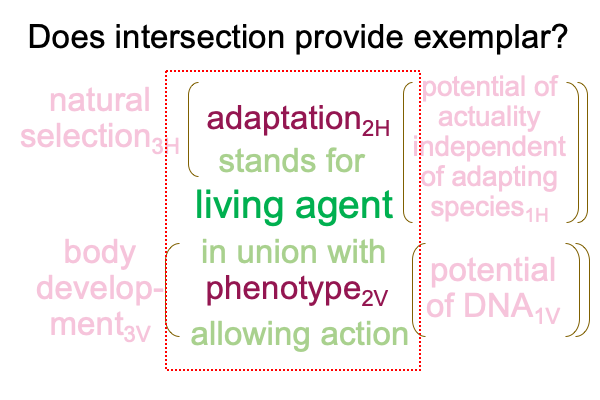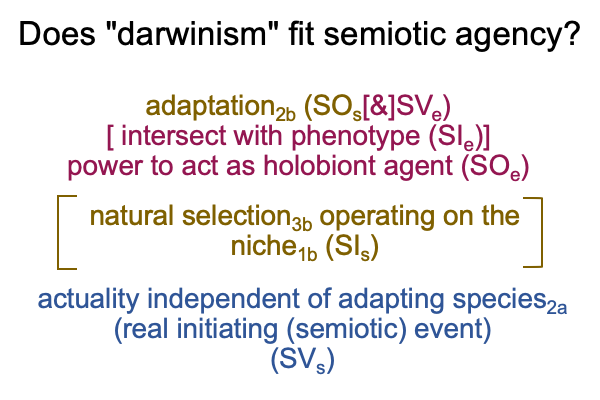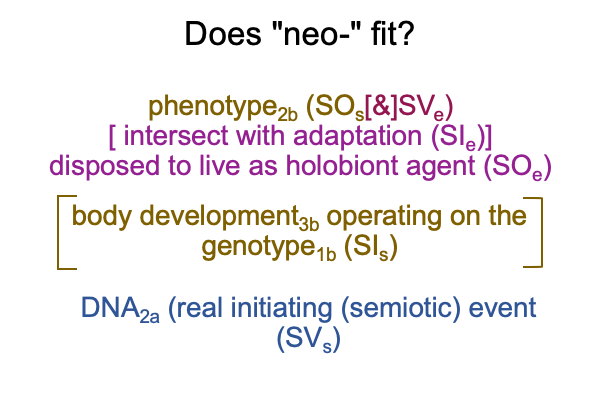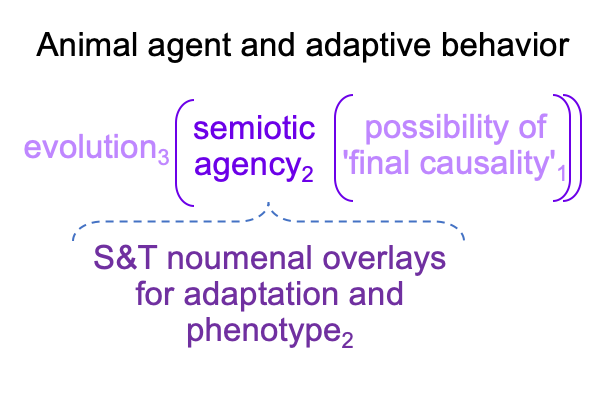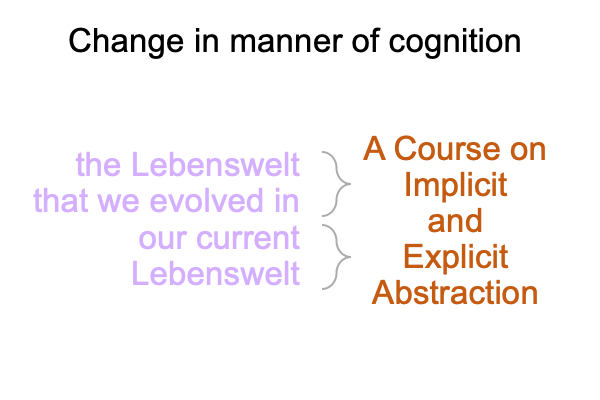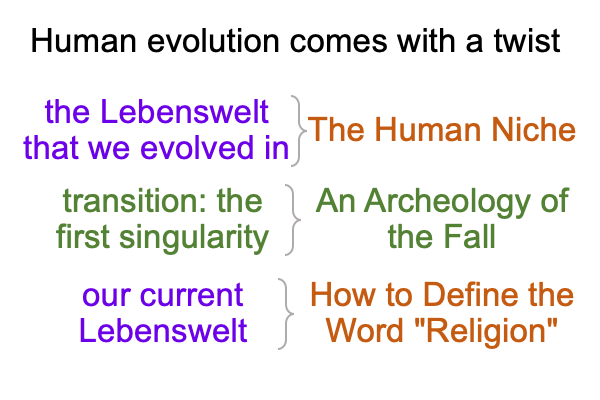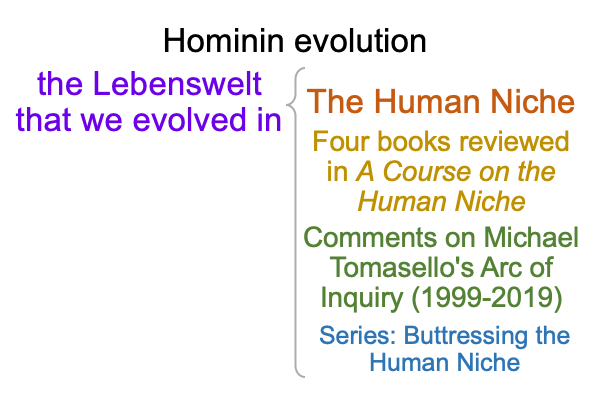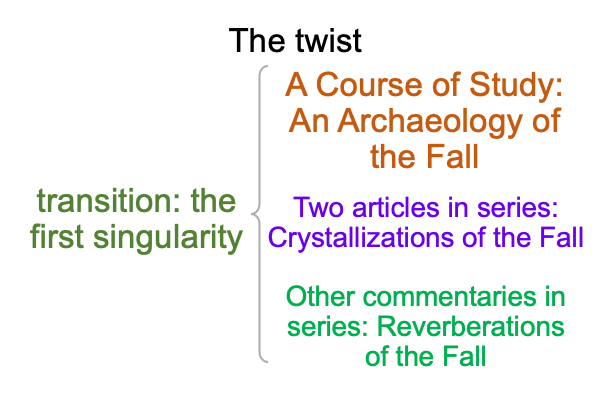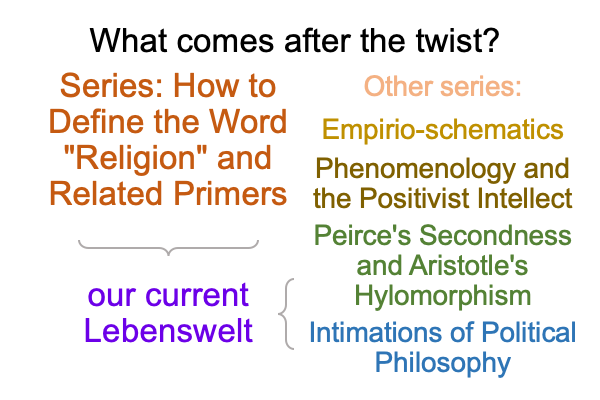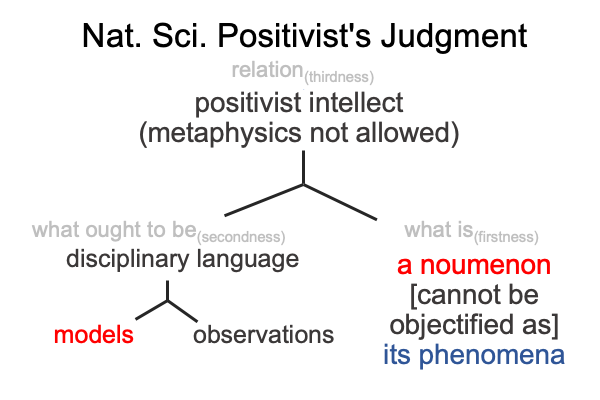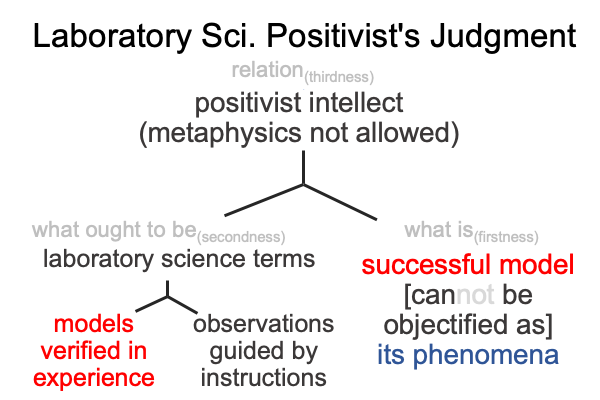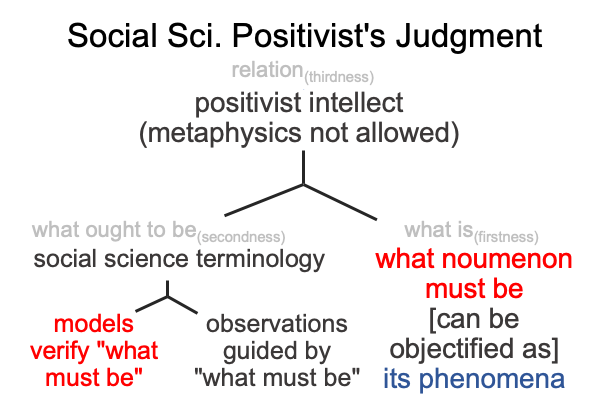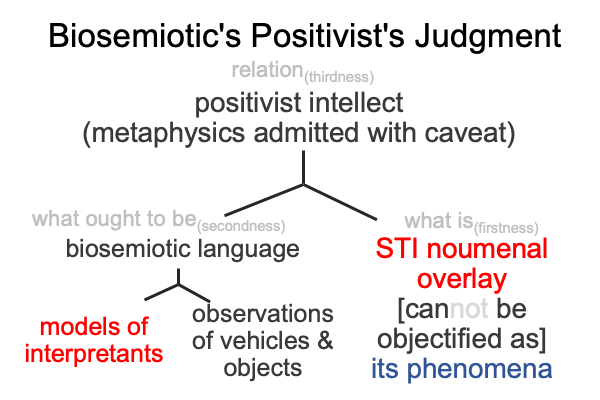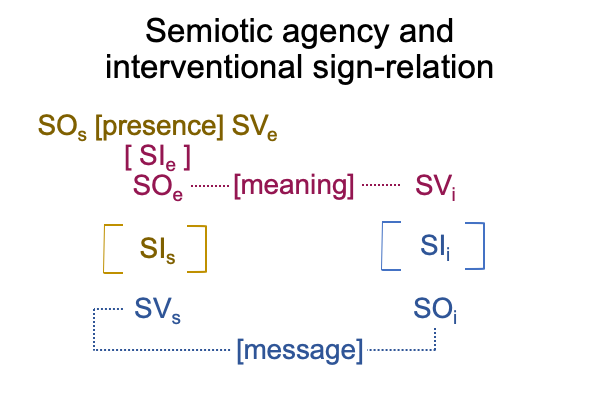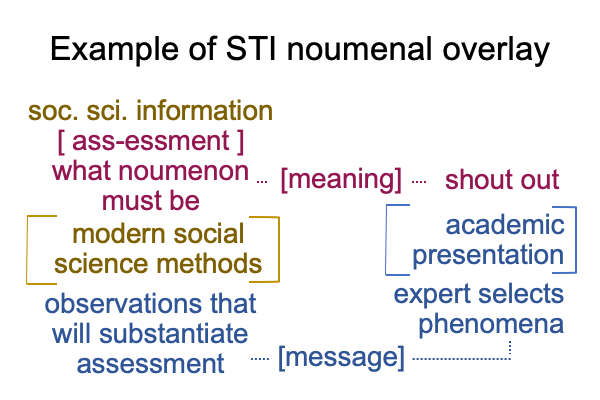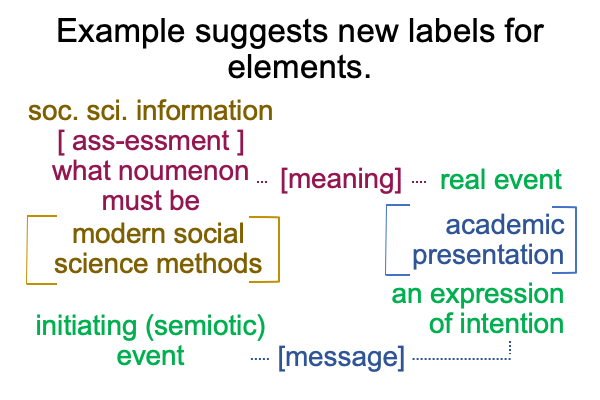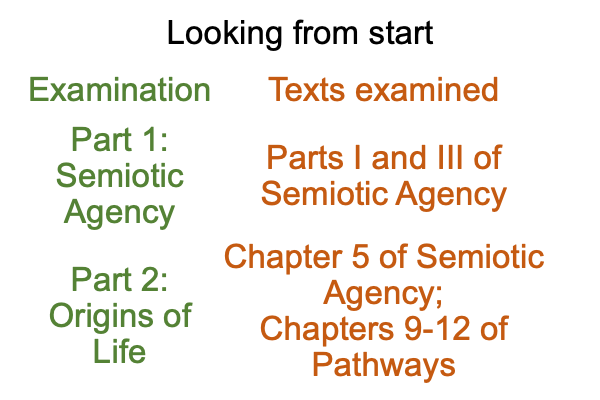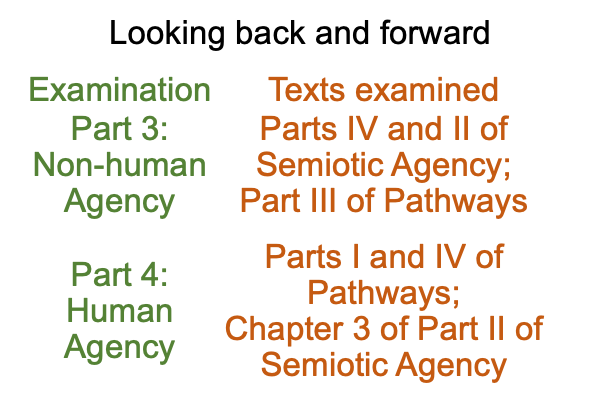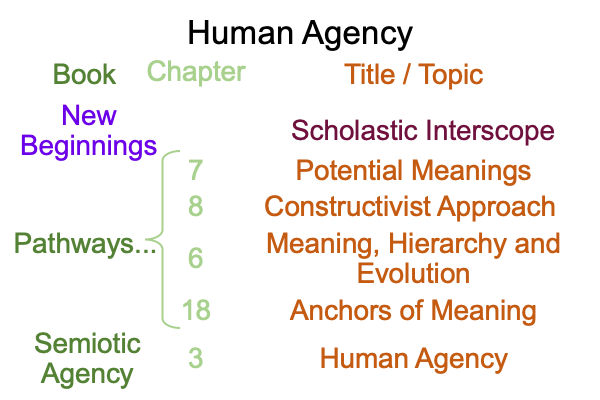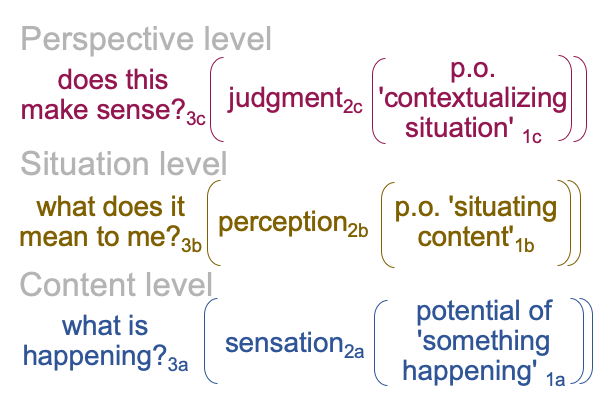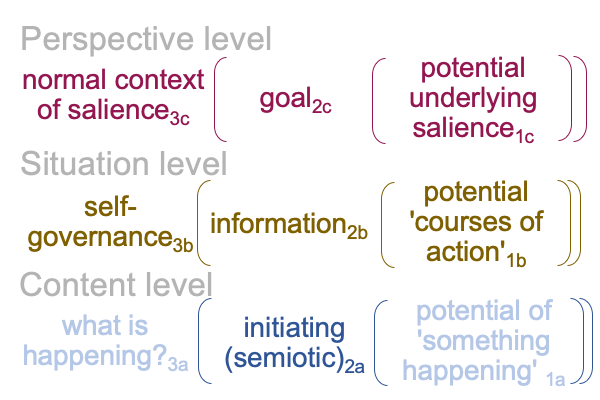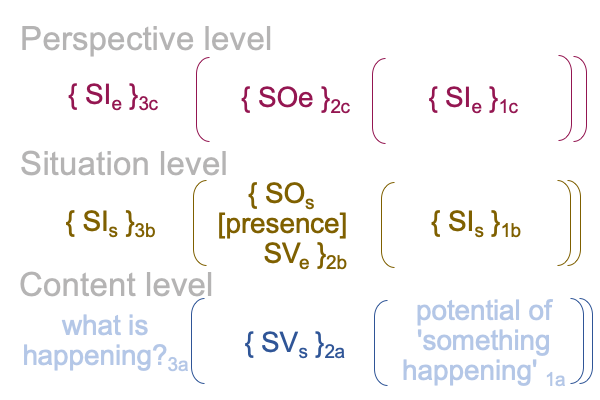Looking at Alexei Sharov and Morten Tonnessen’s Chapter (2021) “Human Agency” (Part 4 of 5)
1248 Why is this lack of exemplar sign-relation salient3c((1c))?
Section 3.1 of chapter 3 of Semiotic Agency says that the human individual has three major components: a body (J), cognition (K) and a niche (L).
1249 What does that (J, K, L) tell me?
1250 Take a look at Figure 3.1, which portrays each component in a cut and paste manner.
1251 Surely, the human body (J) corresponds to phenotype2b as the sign object of a specifying relation.
In section 3.2, the author discusses the human body (J) in terms of subagency.
That is fine, because subagency models [body development3b operating on the genotype1a]. Current research in a variety of disciplines related to genetics is relevant.
1252 The niche (L) corresponds to adaptation2b as the sign-object of a specifying sign-relation.
In section 3.4, the author says that the human niche (L) includes the environment (as well as ecology), human artifacts, semiotic factors (such as information and communication) and social conditions.
Yes, but what about triadic relations?
1253 The author goes on to wrestle with different approaches to the term, “niche”. Each approach tries to model [natural selection3b operating on the potential1b of an actuality independent of the adapting species2a]. But, no approach identifies the one actuality2a that accounts for convergent evolution among all hominin species.
Yes, I am talking about triadic relations.
See The Human Niche, by Razie Mah, available at smashwords and other e-book venues.
1254 The author raises the idea of a “cognitive niche”, which brings me to cognition (K).
Section 3.3 discusses human cognition (K) in terms of subagents.
1255 There are mental modules devoted to sensation, perception, memory, integration and action. They are heterogeneous. They may be called “cognits” because they knit cogs. Surely, mental modules and “cognits” are neural… I mean… cognitive adaptations. Several chapters in Semiotic Agency are devoted to these topics.
Section 3.5 covers periods of human life in terms of age-related phenotype3V (J), adaptation2H (L) and cognition (K). This section rounds off the idea that the human has three components.
1256 Cognition (K) corresponds to the union of both phenotype2H (J) and adaptation2V (L) when it comes to human agency.
And, that is very curious.
1257 The issue of the salience3c((1c)) of the exemplar sign-relation is not raised.
Why is this issue important to me?
Do I see an opportunity?
1258 I see that a living being is an intersection between adaptation2H and phenotype2V.
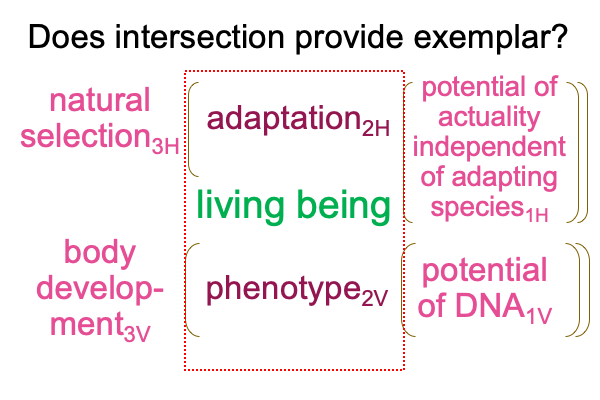
I also notice that, when placed into the purely relational structure of semiotic agency, the specifying sign-relation for both adaptation2b and phenotype2b lack exemplar sign-relations.
1259 So, I wonder, does the intersection of neodarwinism provide complementary exemplar sign relations for the specifying sign-relations of natural history and genetics?

